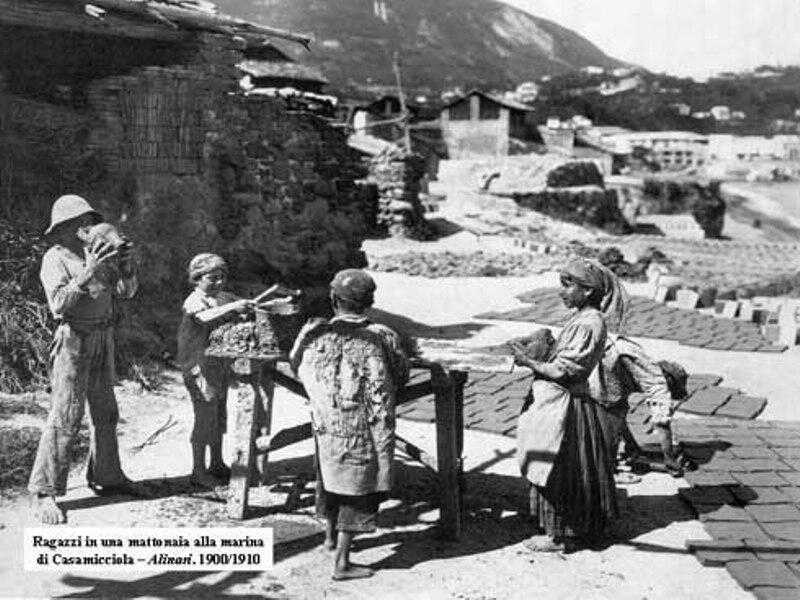
Figure 1.-- This photo was taken in a brick factory in Casamicciola on the island of Ischia some time during the early-20th century. |

|
Ischia is the largest island in the Bay of Naples, like Capri to the south separates the Tyrrhenian Sea from the Bay of Naples. It is, however, much less known than Capri. Islanders insist that Ischia is even more beautiful than Capri. The island is roughly trapezoidal island and is about 30 km from Naples. Ischia is part of a massive volcanic area and is volcamic in origin. It is larger than Capri and more mountaneous and like Capri was once connected to the mainland. The highest elevation is Mount Epomeo (788 meters). The island was inhabited in Neolithic times. There was a Greek colony on the island (8th century BC). The Greeks operated a copper mine there. Gerone of Syracuse (Siracusa) built a fortress on the spot of the present Castello Aragonese. Earthquakes and volcanic eruptions drivevthe Greek colonists from the area. An eruption left a round crater which is now the circular port of Ischia Porto. The island's fertility is due to the rich volcanic soil brought farmers back. The island belonged to the Emperor Augustus who traded it with the Neapolitans for Capri. The last reported eruption occurred in the medieval era (1302). The island cintinues to be volanic hot spot feeding 69 fumaroles and hot springs. An earthquake destroyed many of the island's historic buildings (1883). A reader tells us, "My wife came from the island of Ischia. The town where she was born looks very similar to the photograph of Capri. While not as wll known as Capri, the island is cert popular with Italian as well as German tourists. There are several popular spas.
Ischia is the largest island in the Bay of Naples, like Capri to the south separates the Tyrrhenian Sea from the Bay of Naples. It is, however, much less known than Capri. Islanders insist that Ischia is even more beautiful than Capri. The island is roughly trapezoidal island and is about 30 km from Naples.
Ischia is part of a massive volcanic area and is volcamic in origin. It is larger than Capri and more mountaneous and like Capri was once connected to the mainland. The highest elevation is Mount Epomeo (788 meters). Earthquakes and volcanic eruptions drivevthe Greek colonists from the area. An eruption left a round crater which is now the circular port of Ischia Porto.
The island was inhabited in Neolithic times. There was a Greek colony on the island (8th century BC). The Greeks operated a copper mine there. Gerone of Syracuse (Siracusa) built a fortress on the spot of the present Castello Aragonese. The island's fertility is due to the rich volcanic soil brought farmers back. The island belonged to the Emperor Augustus who traded it with the Neapolitans for Capri. The last reported eruption occurred in the medieval era (1302). The island cintinues to be volanic hot spot feeding 69 fumaroles and hot springs. An earthquake destroyed many of the island's historic buildings (1883). A reader writes, "I went through the ruins of the castle (Costello). I understand from our guide that it had been bombarded by the British during the Napoleonic wars and that is why it is in ruins. It had been used as a monastery. There is a rather gruesome room with "seats" carved out of the rock in which monks were put when they died. Later the bones were thrown on a pile when they needed a "seat" for another body. There were two or three skeleton on the seats when I was there, but the monastery has not been used in many years.
You can swim at a beach near the castle and feel the hot water bubbling up.
some of the luxury hotels have thermal spas. The boats from Naples enter Ischia Porta through a narrow opening in the volcanic wall, and then have room to turn arround inside the crater which has been submerged. Nobody seems to worry about another eruption." Another reader writes, "My wife came from the island of Ischia. The town where she was born looks very similar to the photograph of Capri. While not as wll known as Capri, the island is very popular with Italian as well as German tourists. There are several popular spas.
Navigate the Boys' Historical Clothing Italian pages:
[Return to the Main Italian island page]
[Return to the Main Italian regional page]
[Return to the Main Italian activity page]
[Return to the Main Itlalian page]
[Italian school uniforms]
[Italian youth groups]
[Italian choirs]
[Italian movies]
[Italian royalty]
Navigate the Boys' Historical Clothing Web Site:
[Introduction]
[Activities]
[Biographies]
[Chronology]
[Clothing styles]
[Countries]
[Bibliographies]
[Contributions]
[FAQs]
[Glossaries]
[Images]
[Links]
[Registration]
[Tools]
[Boys' Clothing Home]
